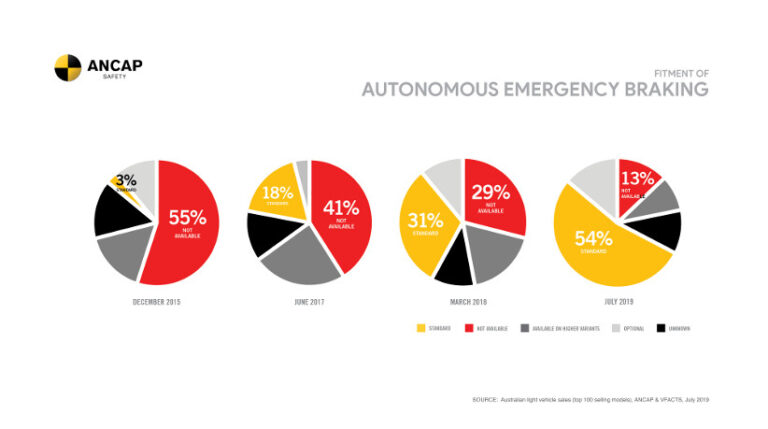Recently at the NSW AfMA Personal Development Forum, Mace Hartley was reminding attendees about the benefits and cost savings of Autonomous Emergency Braking (AEB).
Quoting data from his own research Hartley stated that the average nose-to-tail accident costs $7,000-$8,000 to repair. And since nose-to-tail is one of the most common form of accidents, fleets could save thousands by purchasing vehicles with AEB as standard (or not being myopic and paying extra for the option).
Australasia’s independent authority on vehicle safety, ANCAP SAFETY, has released strong new figures on the market availability and shows consumer uptake of collision avoidance technology, AEB.
ANCAP’s latest market analysis based on sales of Australian new light vehicles shows the standard fitment of autonomous emergency braking has increased rapidly – rising from 18% to 54% in just two years.
“60 of the top 100 selling models now offer AEB as standard equipment,” said ANCAP Chief Executive, James Goodwin.
“In the past month alone, over 40,000 new vehicles entered the fleet with this important collision avoidance technology.”
“This is a significant milestone for the industry and the marketplace, with supply and demand working together to provide positive safety outcomes.”
“A key role for ANCAP is to educate the community on the benefits of AEB, and in parallel, encourage vehicle brands to include it as standard across model ranges and price points,” said Mr Goodwin.
“Some of our most popular and most affordable models – the Toyota Corolla, Mazda 3 and Kia Cerato – and the highest selling light commercial vehicles – the Ford Ranger and Toyota Hilux – all include AEB as standard,” Mr Goodwin added.
The AEB market availability report and status of the top 100 selling models can be accessed here.
[images cols=”three”]
[image link=”#” image=”6700″]
[image link=”#” image=”6699″]
[image link=”#” image=”6698″]
[/images]







